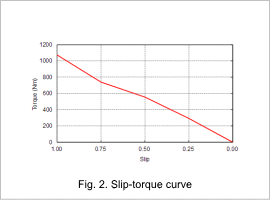*Please prepare a license ID and password for the license administrator.
*It is different from the service for JMAG WEB MEMBER (free membership). Please be careful.
Overview

A wound-rotor induction motor is a motor that causes induced current to flow in the secondary coil using a rotating magnetic field in the stator coil, and thus produces turning force through the interaction of the current and the rotating magnetic field. Because induced current flows through the coil, electric power can be extracted and regenerated via slip rings.
In an induction motor, the current induced by the secondary conductor exerts a large influence on its characteristics. It also causes strong magnetic saturation in the vicinity of the gap, in particular. For these reasons, analysis based on the finite element method (FEM) can accurately handle induced current and magnetic saturation, and is useful for understanding detailed characteristics in advance.
This Application Note shows how to obtain the current density distribution and slip-torque curve.
In an induction motor, the current induced by the secondary conductor exerts a large influence on its characteristics. It also causes strong magnetic saturation in the vicinity of the gap, in particular. For these reasons, analysis based on the finite element method (FEM) can accurately handle induced current and magnetic saturation, and is useful for understanding detailed characteristics in advance.
This Application Note shows how to obtain the current density distribution and slip-torque curve.
Current Density Distribution

The current density distribution at a 0.5 slip is indicated in fig. 1.
Induced current is generated in the rotor coil by the rotating magnetic field of the stator coil. Torque is generated from the magnetic flux and rotating magnetic field created by this induced current, so the current has a large effect on the torque characteristics.
Induced current is generated in the rotor coil by the rotating magnetic field of the stator coil. Torque is generated from the magnetic flux and rotating magnetic field created by this induced current, so the current has a large effect on the torque characteristics.
Slip-Torque Curve

A graph of the slip-torque curve is shown in fig. 2.
The amount of torque that can be produced by this induction motor increases as the slip gets larger. It is necessary to investigate measures such as reducing the rotor’s external resistance when attempting to obtain higher torque with a small slip, because the torque at each slip is determined by the induced current in the secondary side.
The amount of torque that can be produced by this induction motor increases as the slip gets larger. It is necessary to investigate measures such as reducing the rotor’s external resistance when attempting to obtain higher torque with a small slip, because the torque at each slip is determined by the induced current in the secondary side.


